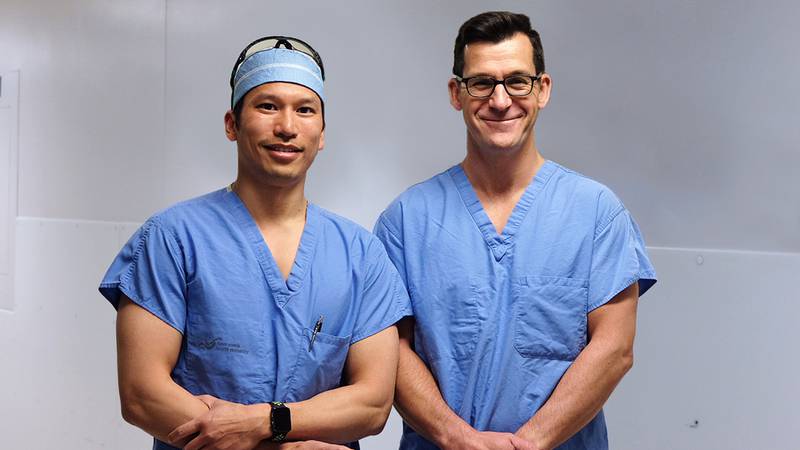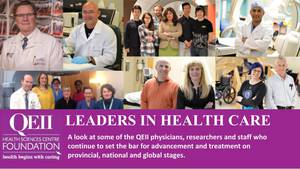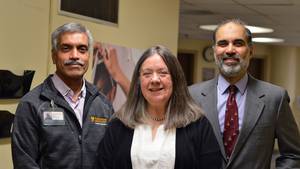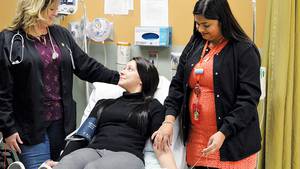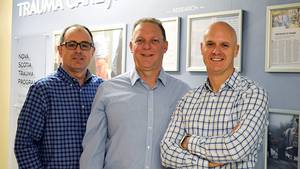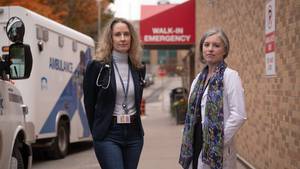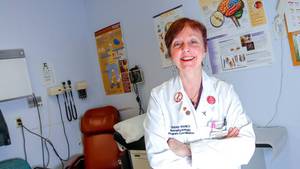Mark Chiasson has been an athlete his entire life, first competitively and now, at the age of 40, for the joy of the sport. His favourites were rugby, rock climbing, soccer and in badminton, he and his men’s doubles partner were ACAA champions and represented the Atlantics nationally. But none of these endeavours influenced his physical well-being so much as one fateful round of high school wrestling.
In the heat of this match, Mark’s opponent threw him with a gut wrench, where both wrestlers go to the mat and roll for maximum points. Mark’s arm became caught beneath his opponent and in an instant, his left shoulder became dislocated.
The shoulder joint is the most common dislocation in the body, but also one of the least appreciated for its severity. Traditional wisdom has been to shove the shoulder back in place and play on, which is exactly what Mark did, returning to the mat with youthful self-assurance. Little did he know that bone had been chipped from his socket; the cartilage therein had been torn, now destined for arthritis; and the ligaments holding this mess together had been stretched beyond their means. The damage, sadly, was permanent.
“The problem with this injury is that it’s a young person’s disease,” says Dr. Ivan Wong, QEII orthopaedic surgeon.
If bone is lost and soft tissue is harmed, which it often the case, victims of shoulder dislocation have a 70 per cent chance of dislocating a second time, regardless of whether they’re competing in sport. After that, the odds of a third are 99 per cent.
Such was the case with Mark, his dislocations continuing regularly for decades, each easier than the last. His joint worsened until it could slip out of place entirely unprovoked. The muscle tone of his 20s helped secure it somewhat, but with his 30s and a budding career in education, the situation became untenable.
As Dr. Wong explains it, the solutions to shoulder dislocation have always been invasive. For the last 50 years it has entailed opening the shoulder by severing muscles of the chest and sewing everything back together, resulting in significant loss of function. Modern efforts use arthroscopic surgery — that is, entering the body by way of small incisions and feed-in cameras rather than open surgery — to repair the soft tissue damage and spare nearby muscle groups. But long-term monitoring demonstrated that, without addressing damage to the bone as well, soft tissue repair simply wasn’t enough.
Responding to this shortfall, surgeons in Europe began fixing the bone and soft tissue damage arthroscopically. Dr. Wong learned this technique in 2012-13 and has since modified it to be more accessible to North American surgeons. Chiefly, he avoids the possibility of nerve damage in his patients by feeding his camera in from the back of the shoulder, a novel viewpoint he has named the “Halifax Portal.” Also, instead of rearranging existing bones in the shoulder to secure the joint, he adds a piece of donor bone that the patient’s body will eventually remodel.
“The majority of our patients have full function,” says Dr. Wong. “Their shoulders are as good as new. They go back to play professional hockey if they want because it’s like a normal shoulder.”
He says the fewer dislocations a person suffers, the better his chances are of completely restoring the function with no pain. Each dislocation causes permanent damage to the cartilage and can lead to early joint arthritis. For this reason, he encourages victims of shoulder dislocation to consult with their physician sooner rather than later and make an informed choice.
In May 2016, Mark opted for surgery and by December, was in the operating room with Dr. Wong. Today, his shoulder doesn’t dislocate and any mild pain he still experiences is nothing compared to before. He now mountain bikes without fear and is slowly undoing a lifetime’s worth of caution.
“The biggest change is when I’m just standing still,” says Mark, “when I relax, my shoulder doesn’t slide out of place. For that, I’m very grateful.”
Dr. Wong and his research team are in the process of publishing their work on this modified technique and Dr. Wong has been sharing the procedure with orthopaedic surgeons across the globe.
Dr. Martin Bouliane, an orthopaedic surgeon in Alberta, recently visited the QEII to learn this technique from Dr. Wong.
“I do a similar procedure, but it’s open and more invasive. It makes further surgery on that same shoulder more difficult and prone to higher complication rates,” says Dr. Bouliane. “This technique may prove to be the answer for shoulder instability in patients with bone loss, without dramatically changing the patients anatomy.”
For surgeons like Dr. Bouliane, coming to the QEII to learn this procedure is an opportunity to collaborate with fellow orthopaedic surgeons, with the goal of advancing care for their patients.
“My patients are the reason I get out of bed in the morning. You never stop learning as a surgeon — and when it translates into taking better care of people, it’s an amazing feeling.”

